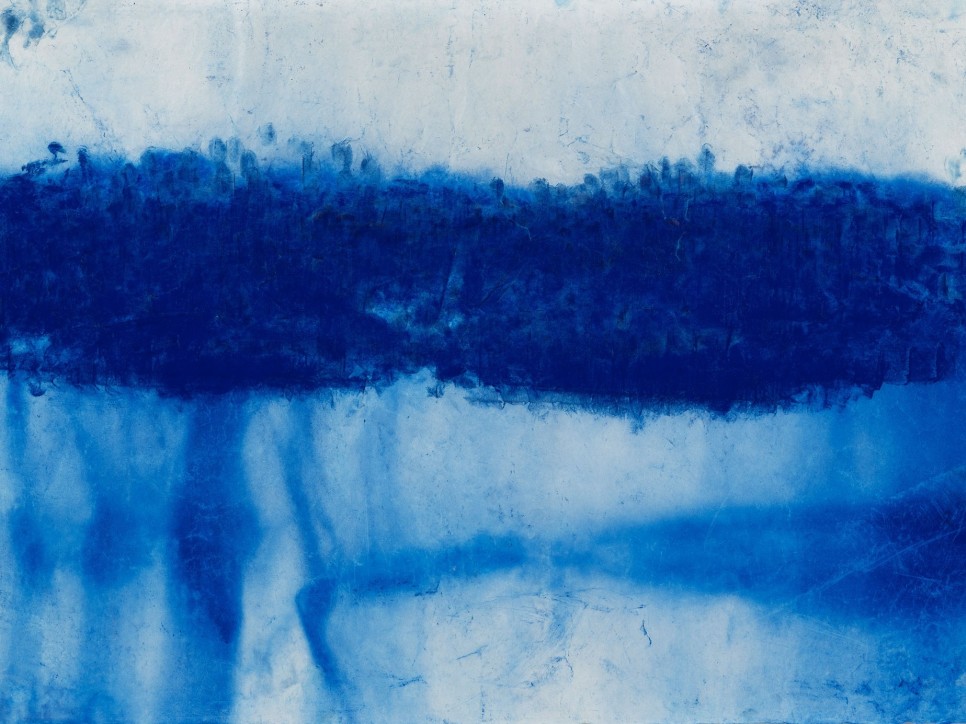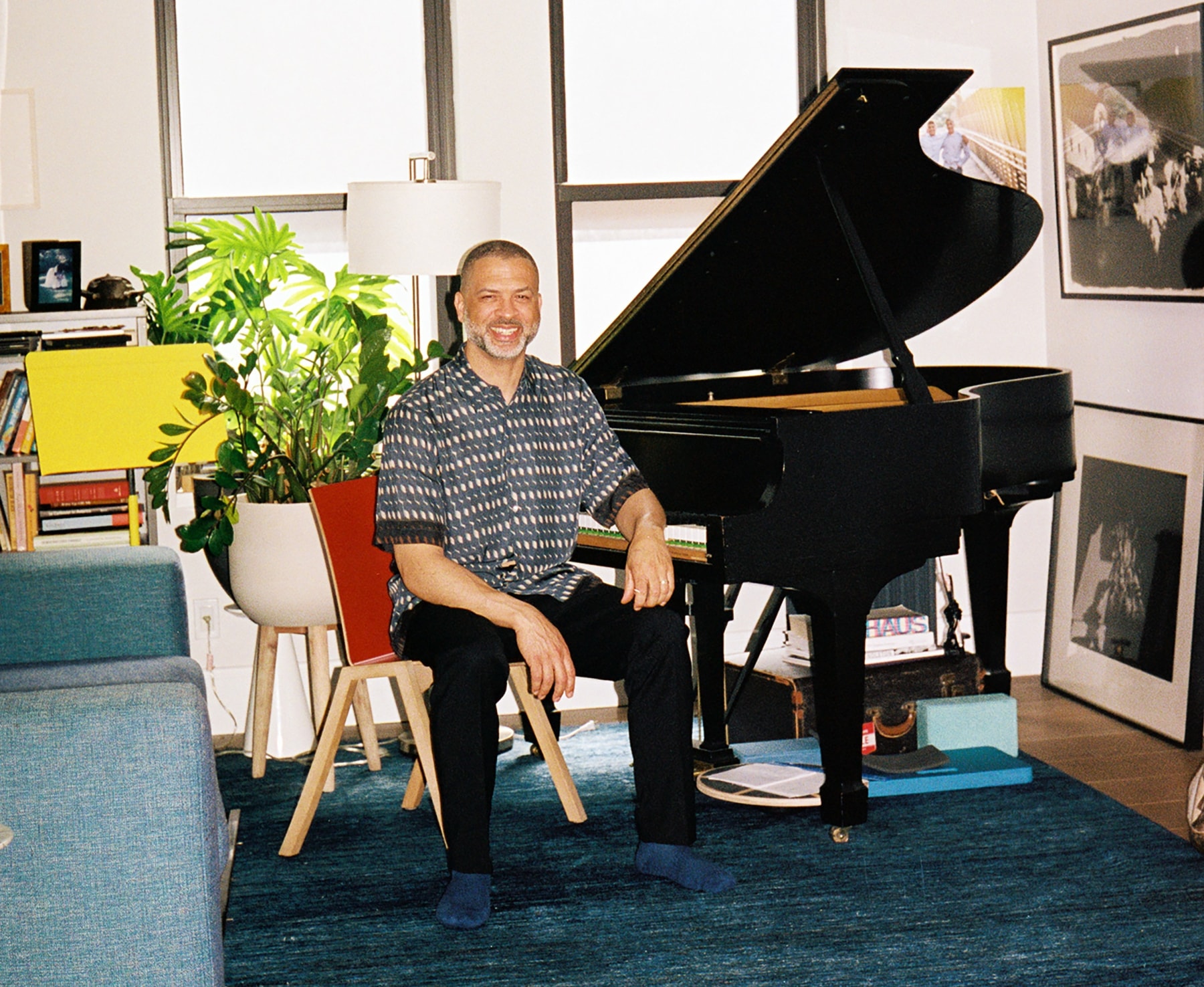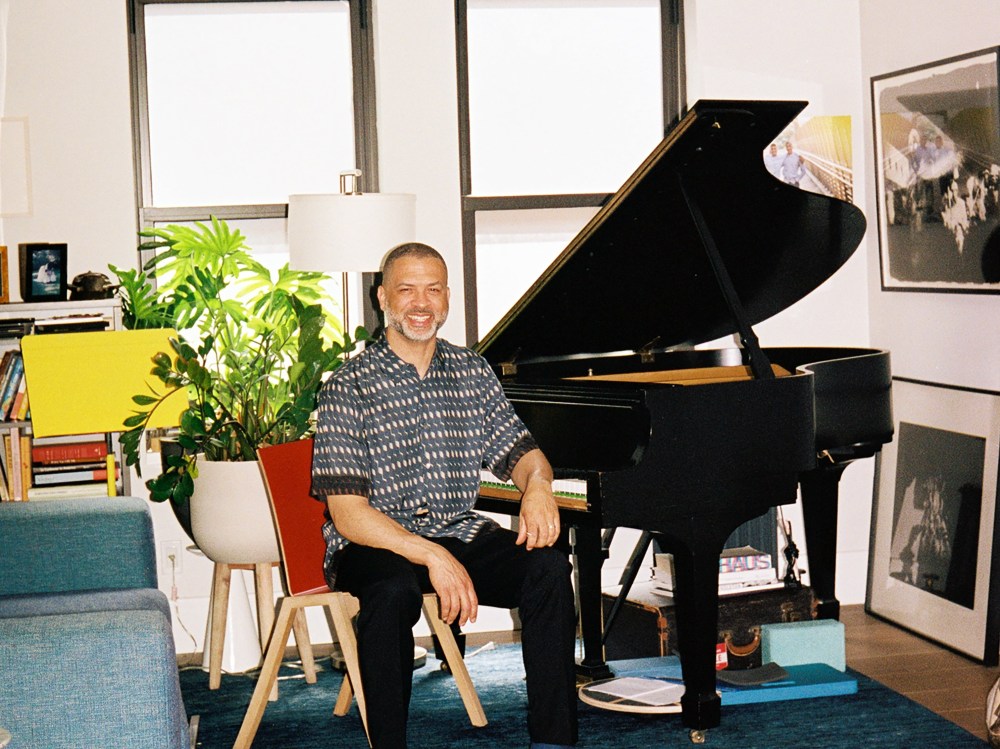

Jason Moran at his home in New York, 2024. Photography: Adrianna Glaviano
Music and visual art have always been entangled, especially in the history of modernism, where dance, painting and radical new sonic palettes were counterposed from the start. Think of the dadaists at the Cabaret Voltaire during World War I or the coterie of multi-media performers that emerged from Black Mountain College or the Fluxus movement at mid-20th century. But, more often than not, it was the painters who seemed to take their lead from the musicians, as they waxed about the ways in which sound could bypass the symbolic world, spoke directly to the soul and resonated with all people. In a recent conversation, Jason Moran echoed that same sentiment, observing that acoustic vibrations can change the motion of water, a ect a listener’s chemistry: “Duke Ellington’s somber places open people up; Coltrane begins A Love Supreme in E minor, with a burst of energy; Stravinsky’s The Rite of Spring agitated to the point of causing a riot…and playing around the world you get a sense of what people are feeling.”
And play around the world Moran has, since he broke into the public consciousness as a young pianist, cut- ting a celebrated 1997 record for Blue Note label with saxophonist Greg Osby. A steady stream of solo projects—many regarded as instant classics—have followed. Elected a MacArthur Fellow in 2010, a relentless composer and committed educator, he is also the artistic director for jazz at the Kennedy Center in Washington, D.C. But, for all that, Moran is perhaps best known as a generous collaborator, who has shared the stage with many, and not only other jazz players. For instance, his groove on the electric piano anchored Luanda-Kinshasa, the speculative 1970s-era “documentary” made by Stan Douglas in 2013. Over the past decade, he has worked with a roster of leading visual artists: Adam Pendleton, Julie Mehretu, Joan Jonas, and Ryan Trecartin and Lizzie Fitch. With the latter two, known for their innovations in sound and video, Moran first connected for a multiday celebration he curated in 2016 for the reopened Veterans Room at Park Avenue Armory, and they will reprise their collaboration this summer at the Aspen Art Museum.
Read full article at aspenartmuseum.org

